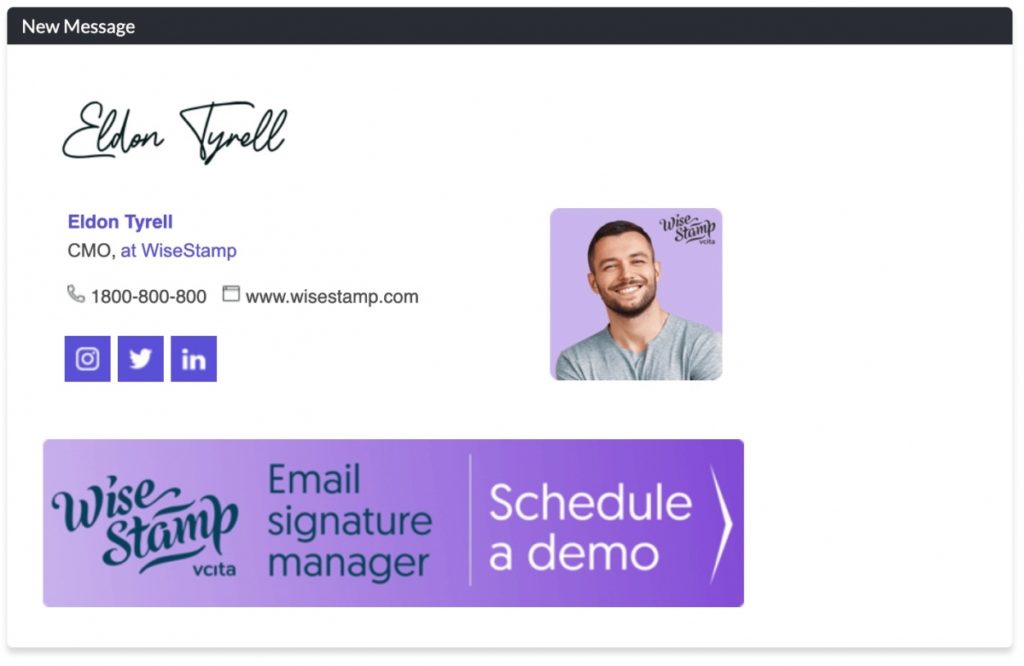According to the latest B2B Content Marketing Report by CMI and MarketingProfs, 70% of B2B marketers produce more content than they did a year before. Due to information overload on the Web, it is now getting harder and harder to come up with fresh, unique, and engaging content.

Do I need Content Marketing tools?
The role of Content Marketing in any online marketing campaign is indisputable, and the importance of publishing top-quality content on your blog is constantly on the rise. Social media content, blogging, and publication of articles on your website remain the top three elements of a smart and efficient B2B Content Marketing tactic.
Given that you should publish your content across so many channels, it is virtually impossible (and pointless) to do everything manually. Some tools offer valuable insight into who your customers are and what they need – if you’re not using them and rely solely on intuition, you are simply losing money. Knowing the right tools to get a specific job done quickly and efficiently means you can stop wasting time and resources, and get positive results.
Without further ado, here’s a list of 21 (and 1 bonus) Content Marketing Tools you should get familiar with if you want to improve your current Content Marketing strategy.
Related: How SaaS marketers can use price skimming to their advantage?
1. Ahrefs Content Explorer
Karl Kangur, founder of Business Media, says that Ahrefs‘ Content Explorer has been their ultimate secret weapon against other SEO agencies. Whether it comes to finding the most shared content, broken backlink building opportunities or simply topics you’ve missed – it’s a marketers gold mine.
Ahrefs Content Explorer is immensely helpful in discovering trending topics on the Web. What makes it so useful is the fact that you can type in literally ANY subject from ANY niche (no matter how specific).
Ahrefs Content Explorer will come up with nice and clean results, including the date and number of social media activities, such as retweets, Facebook shares, repins, LinkedIn shares, and so on.
You can use the tool to find the right subject or headline for your content, especially if you narrow your search to a particular period of time – I usually narrow mine to 1 week and 1 month, depending on the niche I am exploring. Sometimes I explore the most popular titles of all time but bear in mind that some old tricks simply don’t work anymore. Non-subscribers can only see the top 20 results, and there’s a Newbie free plan to get familiar with the tool before you buy.
2. BuzzSumo
BuzzSumo allows you not only to find the most popular subject and topics, but also to get familiar with influencers in a given subject area, or your competitors. This tool is brilliant – results are easy to digest, simple, and minimalistic. Here’s what they look like:
To get started, simply visit Buzzsumo.com and type in the keyword phrase or subject you want to explore in the box, and click “Go!”. It’s that simple.
You can also narrow your search by adding additional parameters, such as timeframe or language, and select a number of filters.
Keyword Tool Dominator is a free tool that can help you target long-tail search queries carried out by your potential audience. To get started:
- Sign up for the Google Autocomplete Tool (free of charge),
- Type in a general keyword in the search bar,
- Hit the green “Search” button.
Viewing returned results lets you come up with article topics and ideas real users actually look for online. Keyword Tool Dominator also offers other great tools, including Youtube and Amazon Keyword Tools.
4. Quora
Quora is a goldmine when it comes to looking for content ideas and searching for new angles on topics you have been working on for a long time. Questions and anecdotes people come up with can be very inspirational, but refer to other resources and check if the information you intend to quote is valid. Keep an eye on recurring questions and the “want answers” feature to identify trending topics.
5. Content Idea Generator – Portent
Headlines are powerful, but those who produce a lot of content often struggle to find the right ones. I like to use a combination of tools depending on the register of the article. I’ve been using Portent Headline for a while now and it’s helped me immensely when I was looking for the right angle on a popular subject. Returned results are fun and they often make a reference to celebrities and current events, so they may not be suitable for all types of businesses.
6. Emotional Headline Analyzer
If you could only read one thing on headline composition, it should be Growth Hacker’s list of 10 Takeaways from an analysis of nearly 1 million headlines. Emotional headlines are huge, and they boost your chance of arousing interest of your readers.
At SaasGenius.com, we often refer to Advance Marketing Institute’s Free Headline Analyzer. The tool checks your headlines for Emotional Marketing Value (EMV) score based on impact words used in the headline of your choice. It also suggests what quality it appeals to – Empathy, Spirituality, or Intellect.
Here’s what your results might look like:
As rule of thumb, when composing headlines or any type of content, think about particular emotions you wish to evoke in your audience. If you’re confused about the relationships between emotions, have a look at Robert Plutchik’s Wheel of Emotions:
There’s a whole range of emotions you may want to appeal to, but do you know which emotions drive engagement best? Here’s the findings of Fractl’s research on emotional factors of virality represented on Plutchik’s wheel of emotions:
Of course, great headlines (or content) does not equal emotion only. If your text has a particular purpose and is not based on strong emotion, it can still be successful as there are also other factors at play here. And what factors would that be? Well, if you are not familiar with the STEPPS framework developed by Jonah Berger, I strongly recommend his book “Contagious: Why things catch on”. The chart below represents Berger’s theory of six factors which make ideas and content go viral, but the book truly has much more to offer.
MORE: 21 free small business tools for entrepreneurs.
7. Trello
I really recommend using Trello for organizing your projects, tasks and ideas on simple, easily visible cards. My colleagues and I have succesfully used the tool to collaborate and share our thoughts in an organized manner. Getting started is really simple thanks to Trello’s super-helpful guide for beginners and their informational videos. This may be why they have become so popular – in 2014, they reached 5 million users.
8. Tomato Timer
This is not a Content Marketing tool per se, but it’s helped me so much I thought I should spread the love. I use timeboxing when researching Content ideas (it’s easy to wander off when looking for inspiration, especially on social media) and in the actual process of content production. Another great use of the timer is to sit down for a single timebox and deal with with a combination of small, petty tasks which distract you throughout the day. To make sure that you’re always working on the right tasks, you should define your goals using for example a SMART goals template.
Although I do not follow the rules of the Pomodoro technique, I find the idea of timeboxing very helpful. Check out the Pomodoro method and decide if it’s something you’d like to try out for yourself: https://pomodorotechnique.com
9. Evernote
Evernote is an online workspace which can be filled with pretty much everything you want to save, i.e. notes, tasks, photos, and clipped online content – in other words, anything you find inspirational. You can sync across phones and other devices and the more you use Evernote, the better it gets. You can find Evernote’s most popular tips here.
10. Squirrly
Squirrly refers to its plugin as “the SEO plugin (…) for the NON-SEO experts”, and it is exactly that. The purpose of the tool is to create and optimize content for humans, and make search engines fall in love with it at the same time. Dream of any content marketer come true, isn’t it?
SEO Plugin by Squirrly boasts a staggering +285% increase in traffic.
You can have a look around the plugin by watching Youtube videos from WordpressSeoPlugin
11. Pingdom Website Speed Test
Although loading time is not the most important of ranking factors, both your users and Google favor fast-loading websites. A single second of website loading time can cost you a 7% decrease in conversion rate (Kissmetrics), which is pretty much throwing money out the window. Here’s some basic information you get when carrying out a search.
Positionly is a Polish content marketing tool for start-ups, e-commerce and agencies.
With Positionly, you can monitor multiple campaigns and their results and keep an eye on your competition thanks to the Competitor Analysis. You can also choose your keywords and monitor exposure in search engines after introducing new types of content. Other features include Recent Activity, Position Tracker, Inbound Links Checker, and many more. The best thing about Positionly is that it is really simple, intuitive, and user-friendly. You can try them out for free here.
13. SEO plugin by Yoast
WordPress search engine optimization plugin by Yoast has great features designed to optimize your site across search engines. The plugin is free of charge – optimization areas include titles, focus keyword analysis, SEO titles, meta description, and much more. Here’s an example of what it looks like:
14. Colibri.io
Colibri.io has a number of content production and distribution tools. With Colibri.io, you can explore keyword opportunities, monitor rankings, and find guest blogging opportunities. Colibri.io also allows you to monitor your brand online and increase brand visibility, thus getting more traffic to your site. The tool helps you find out who and where is talking about your brand and your competitors, so that you can insert yourself in online discussions whenever necessary.
15. Brand24.com
Brand24 provides instant access to online mentions across various channels, from social media to other types of publications. The tool allows you to find out what your customers say about you in real time, as well as search for prospects and generate leads by tuning into conversations.
You can monitor buzz around particular keywords, which allows you to produce shareable content your audience will find interesting. If you are looking for for user-friendly mentions monitoring software, these guys are doing it right. Here’s a quick look at the dashboard – it is very neat and easy to navigate, and their customer service is outstanding.
16. SALESmanago
SALESmanago is a marketing automation platform with a whole array of features. You can generate leads, monitor your visitors, segment them based on behavioral parameters, and adjust marketing activities to maximize profit.
The best thing about using SALESmanago for Content Marketing is the dynamic content feature which allows you to adjust communication on a website or landing page for specific users, both anonymous and logged in. You can also produce responsive newsletters in very little time.
17. Buffer
Buffer’s motto is “Save an hour a day on social media with Buffer” – you can minimize time spent on social media by scheduling posts to be shared across various social media channels, including Facebook, Twitter, LinkedIn, and Google+. There’s also a Buffer on Pinterest. And if you want to be sure there is always content loaded in your Buffer account, then Bulkly can automatically add status updates into your Buffer queue for you.
When using Buffer, or any social media scheduling tools, remember to optimize your posts for specific communication channels – here’s some guidelines from Buffer’s infographic on optimal post length.
18. Inbound.org
Inbound.org is an online networking space where you can look for content ideas by observing trending topics, and promote your own work. Here’s what the “Trending” section looked like at the time of writing this article:
Inbound.org gives tremendous opportunity for content promotion – once you publish, add your article to increase your reach and receive feedback from other marketing professionals.
19. Visual.ly
Why is visual content an inseparable element of a successful Content Marketing strategy? It’s simply because we are “visually wired” (you simply HAVE TO see this great, animated infographic by NeoMam here).
We suffer from information overload and therefore scan and skim rather than read online content. This may explain the ever-increasing popularity video – according to Forrester research, a 1-minute video is worth 1.8 million words.
Visual.ly is your to-go place for infographics, presentations and video.
The effects are stunning, but bear in mind it is not a free infographic creation tool. If your marketing budget doesn’t allow you to splash out on their services, consider hiring an experienced graphic designer who can do the job for you.
20. QuickSprout
Quicksprout is a tool designed by Neil Patel – one of the biggest Internet marketing influencers and SEO experts like Quikclicks out there. Neil’s tool, Quicksprout, is as good as it gets. Here’s how you can try it out: visit Quicksprout.com and enter the address of the website you would like to analyze.
You will be asked for your contact information and your monthly marketing budget, and Neil will sure take it from there.
And last, but not least….
21. Google Analytics
You have probably heard it a number of times, but Google Analytics still remains an indispensable marketing tool which provides you with priceless insights into customer data and behaviour.
There’s a good chance your company already uses Google Analytics, but not to its full potential. How can Google Analytics help your business thrive? There’s a number of ways you can choose, depending on your industry, the current state of your website, its landing pages, etc.
One of really good examples of GA success stories is Apmex.
With the help of e-nor, an authorized Google Analytics reseller, the company integrated data received from GA with their CRM system. They also introduced changes in customer service processes by giving their team valuable behavioral information acquired by GA. As a result, CPA (cost per acquisition) decreased by more than 20%.
Google Analytics can also be used in your content strategy in a number of ways. As an example, Google posted a video case study of one of their clients – Fairmont Hotels, who doubled their traffic thanks to tailoring content to the needs and preferences of their customers:
Another idea is to look at the “Queries” report to establish most popular keywords which may help you define what your visitors are most interested in. Sometimes an old post on an evergreen subject may generate a lot of traffic for a really long time – it is worth considering whether you can tap into the interests of your audience and come up with another popular posts of that kind.
22. WiseStamp Email Signature Manager (bonus)
The WiseStamp email signature manager helps companies unify their branding throughout their organization’s email signatures. WiseStamp turns your company signatures into a low cost, high impact marketing tool that engages your email readers, whether you have an email campaign running or not.
The last thing most of your email recipients will see is your company email signature. And with the average small business in the US sending out around 150,000 emails annually, having an effective email signature can be a major contributor to your bottom line.
The email signature manager by WiseStamp really saves you time on setting up a global signature. The tool lets you centrally manage and update your email signatures for all the company’s employees automatically. It comes loaded with templates, features, and apps for disclaimers, banners, social media icons, and so on.”

Conclusion
Although the tools presented are designed to perform various tasks, most of them aim at a single thing – tapping into the interests and needs of your audience. The character of the abovementioned tools reflects the way the Internet has changed over the years, with the focus shifting from search engines to humans. In the future, SaaS model solutions will be even more successful and many new tools are still underway, so keep your eyes wide open.


